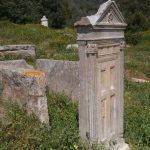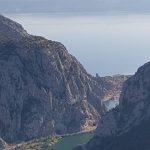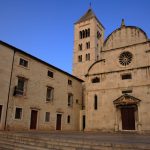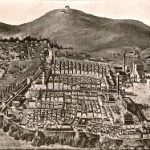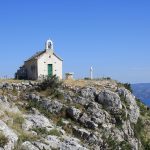Continuing our popular series getting to know Croatia a little better, the latest “25 Things to Know about” comes from Omiš on September 17, 2017.
When I set my foot for the first time in Omis I was astonished by the beautiful colors of the Cetina river, powerful mountains and clear, blue sea. As it goes with life, the first time I saw Omiš, I was struck by its physical beauty and then it took me some time to discover all the beauty hidden underneath. So, I am still doing it, for the almost 20 years now. Still discovering – its beauty and its secrets.
Ladies and gentlemen, please let me introduce to you Omiš – a gorgeous little town placed only 25 km from Split, in Central Dalmatia.
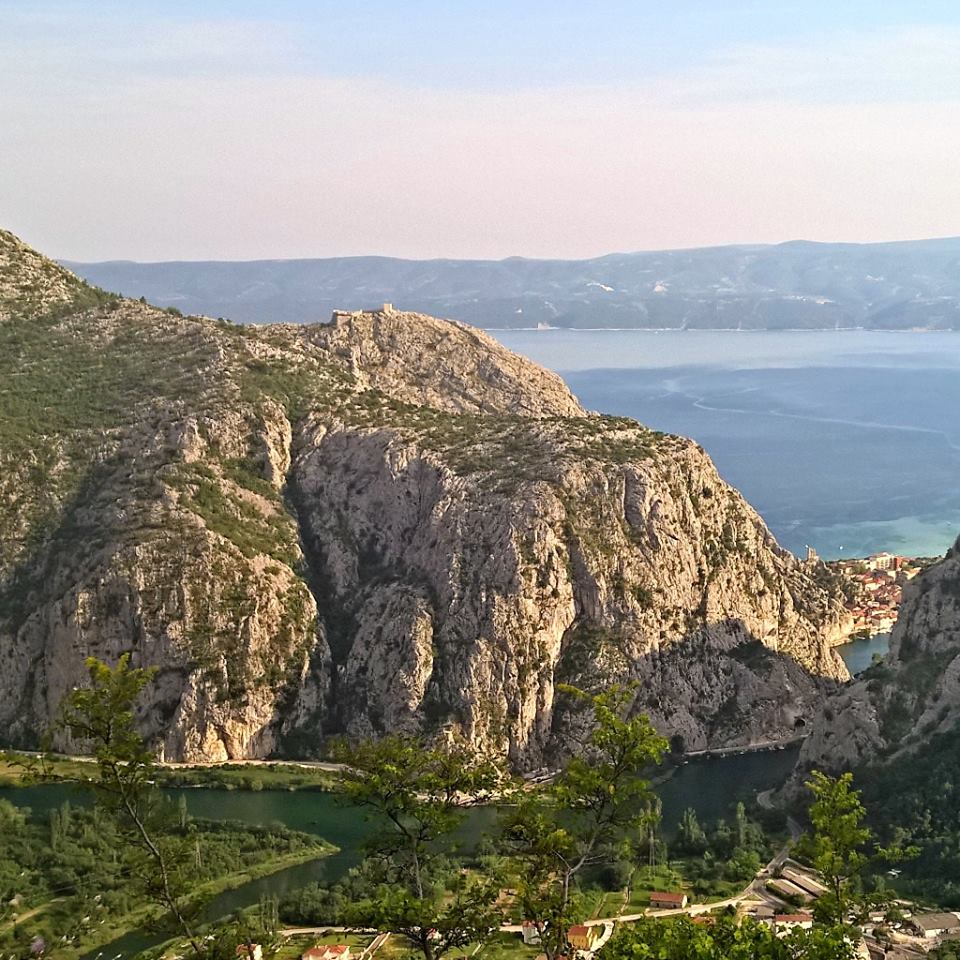
1. AMAZING LOCATION Omis has found its place on the breathless spot you will not have a chance to see very often. It is situated on the estuary of the Cetina river which almost ceremonially flows through the Omiš’ very heart and magnificent canyon to the embrace of the Adriatic sea. Omiš is surrounded by several hundred-meter high hills of Omiska Dinara, Babnjača, Komorjak and Mosor mountain.
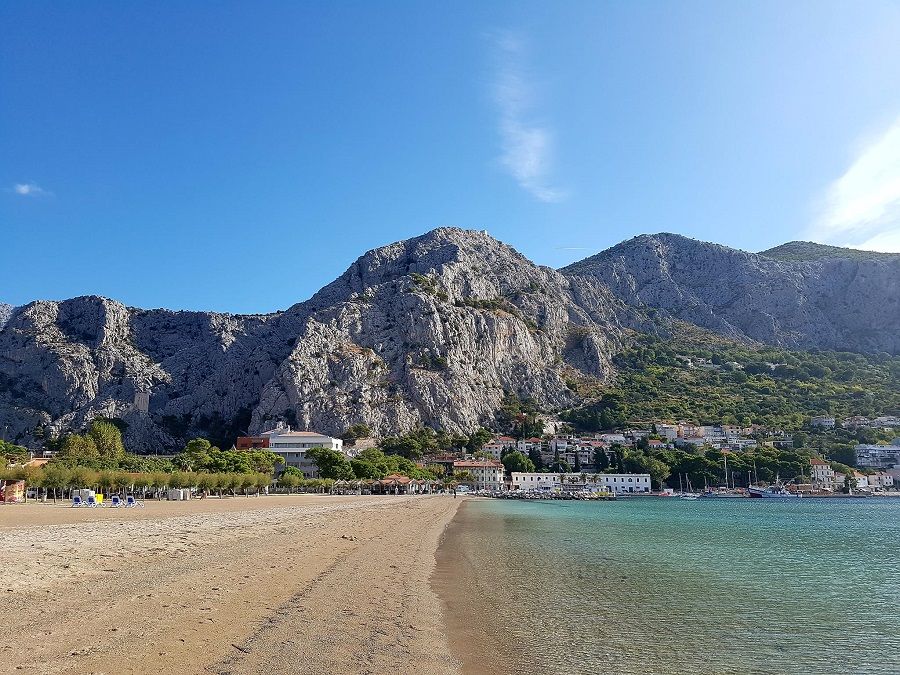
2. DIVERSITY OF BEACHES Did you know that the longest beach between Split and Makarska is in the center of the town of Omiš? The town beach Punta is 400 m long and has a Blue flag. Did you know that the longest sequence of sandy beaches on the Croatian coast can be found from Omiš towards Split? More than twenty kilometers of the Omiš Riviera cover all beach preferences whether you love coves, sandy, rocky or pebble beach. But, it is not all about beaches. The tradition of the special technique of digging sand was developed here more than 300 years ago and it’s called salabunjerstvo. From 1908 till 1983 Omis had a factory for producing cement thanks to the marlstone.
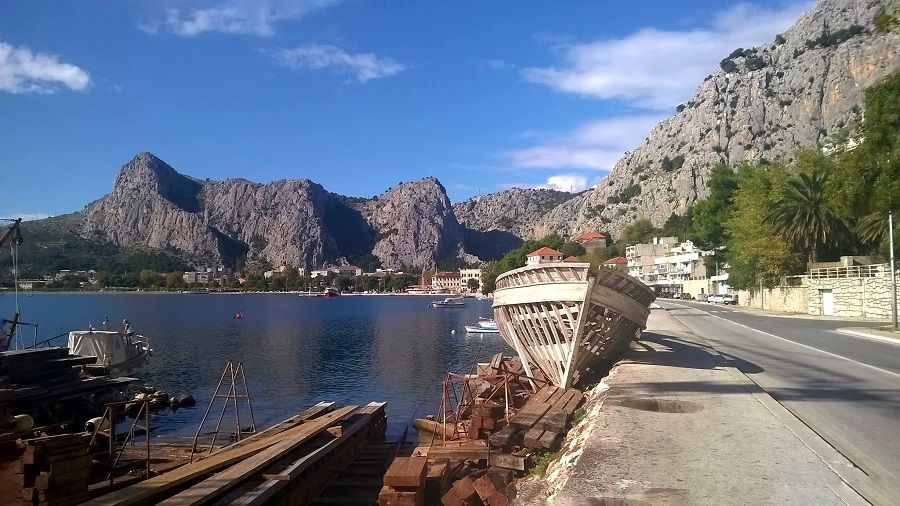
3. KALAFATI, guardians of traditional wooden shipbuilding. For the last 90 years, a little shipyard (škver in Dalmatian) has been located along the Adriatic Highway in Omiš. The Milina family has run it since 1980. I found information that this little Omiš škver, called Loger, make boats exclusively of high-quality Slavonian oak. They have built a replica of the Dubrovnik Galley, a 16th century boat, 30 meters long, built for the first time in 400 years.
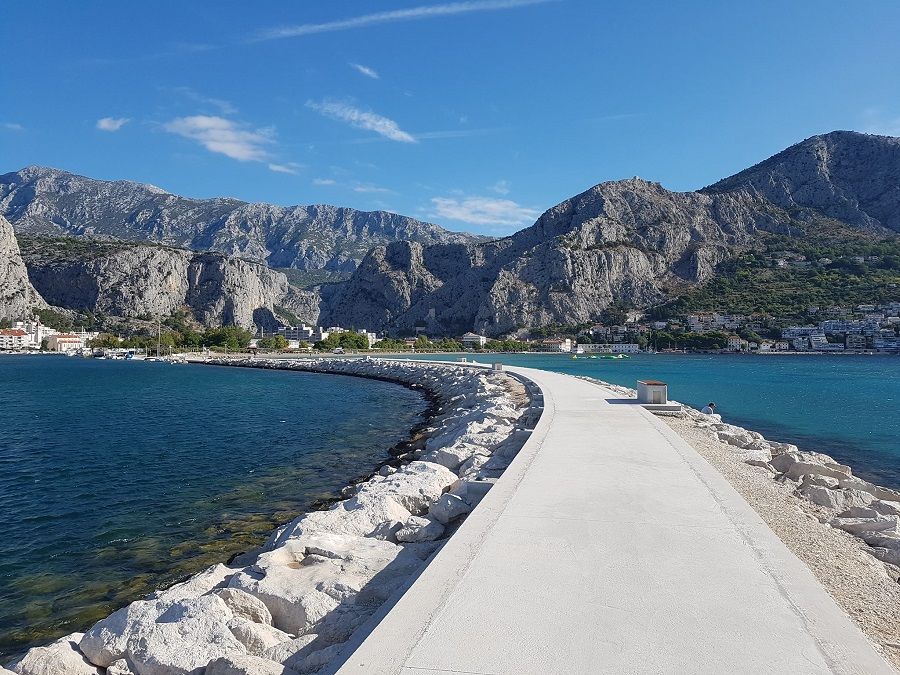
4. PROMENADE WITH A VIEW TO DIE FOR! “A picture is worth a thousand words”
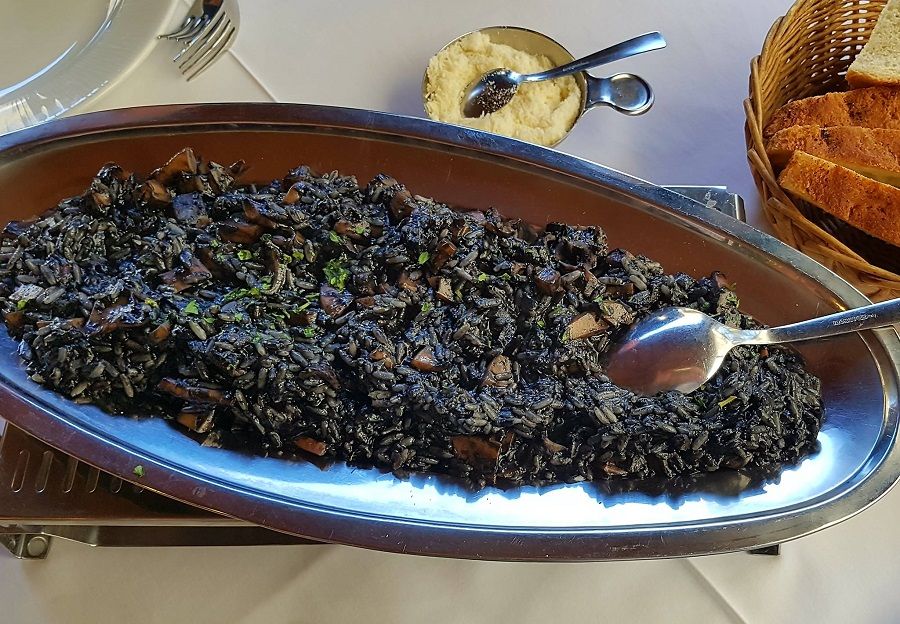
5. FOOD and diverse culinary tradition. Omiš region is the meeting point of sea, river and inland gastronomic influences. What else to say? Except, maybe, seafood and sea fish, olive oil, lešo cooking (simmering), gradelavenje (grill) and baking under the peka (meat with vegetables baked under the iron lid covered by hot embers and ashes), freshwater fish, frogs, snails and eels, prosciutto, cheese and petrusimul (parsley).
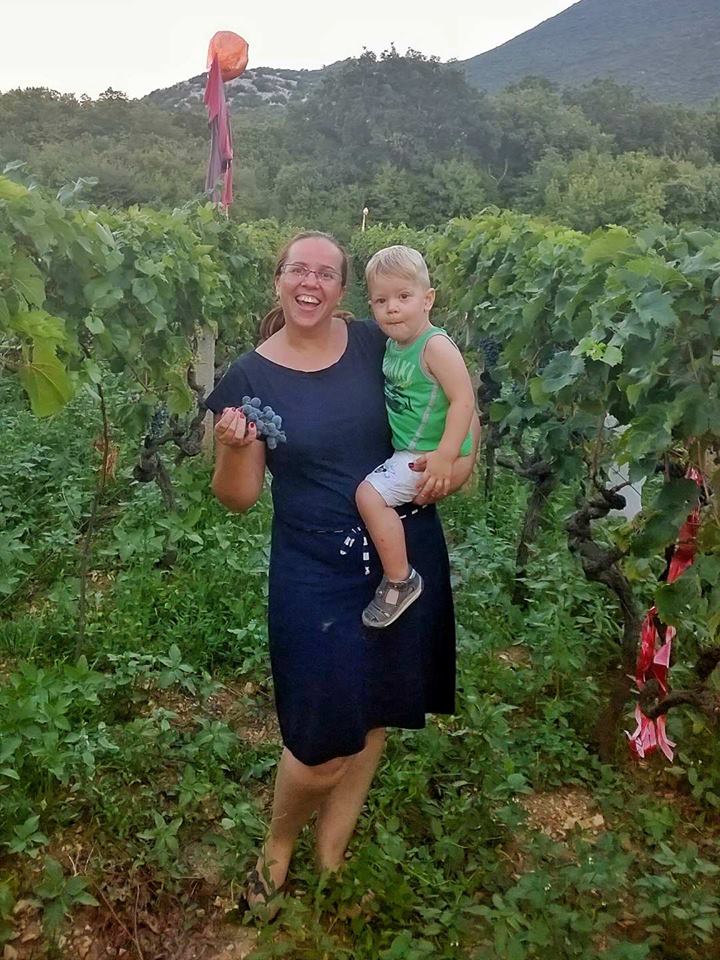
6. WINE PRIBIDRAG known as Zinfandel in California as well as Primitivo in the south of Italy. It originates from Dalmatia, where it is known as Pribidrag – OMIŠ REGION or Tribidrag and Crljenak Kaštelanski. The first reference to Pribidrag dates all the way back to the 15th century.
7. FESTIVAL OF DALMATIAN KLAPA OMIŠ was established in 1967. This important cultural event preserves Dalmatian musical heritage – klapa singing was listed on UNESCO’s Representative List of the Intangible Heritage of Humanity in 2012. Since last year, all visitors and people willing to learn more about the festival and klapa singing have a chance to do so at the Permanent exhibition – “50 years of FDK Omiš”. The exhibition is interesting and modern with audio-visual elements, artifacts and photographs, original souvenirs…
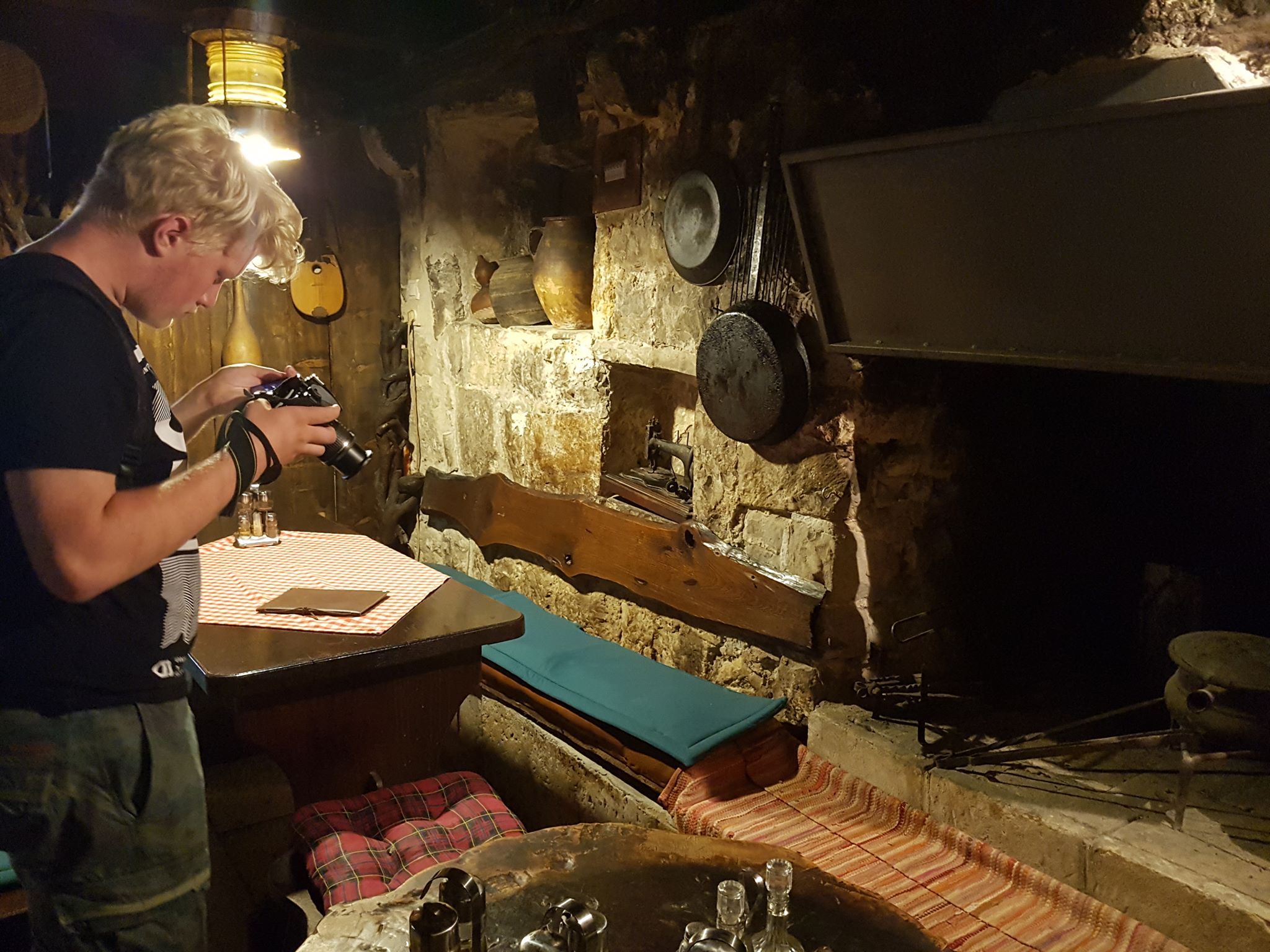
8. KONOBA “U NAŠEG MARINA”, some say, is the first and the oldest konoba in Dalmatia opened in 1969 and is placed in a 400-year-old stone house. This is also the cradle of the famous Festival of Dalmatian Klapa Omiš. Konoba „U našeg Marina“ was the inspiration for the very well known song in Croatia: Konobo moja (My konoba) written by Tedi Spalato and performed by Meri Cetinić.
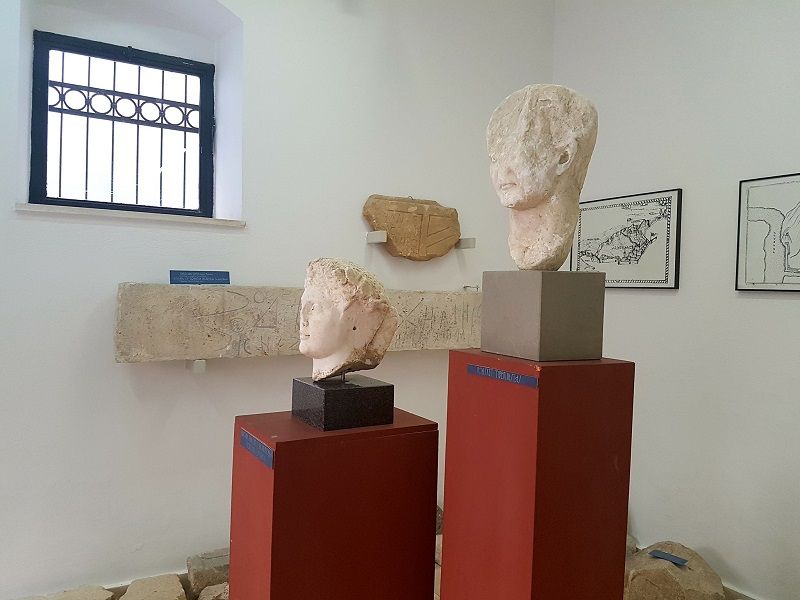
9. ANCIENT OMIŠ was inhabited more than 2000 years ago. It was an Illyrian settlement of the Onastin tribe and it was situated North from today’s location, right under the Omiška Dinara, in today’s village Baučići. It was also a Greek and Roman colony. Antique artifacts found at this location can be seen at the Town Museum.
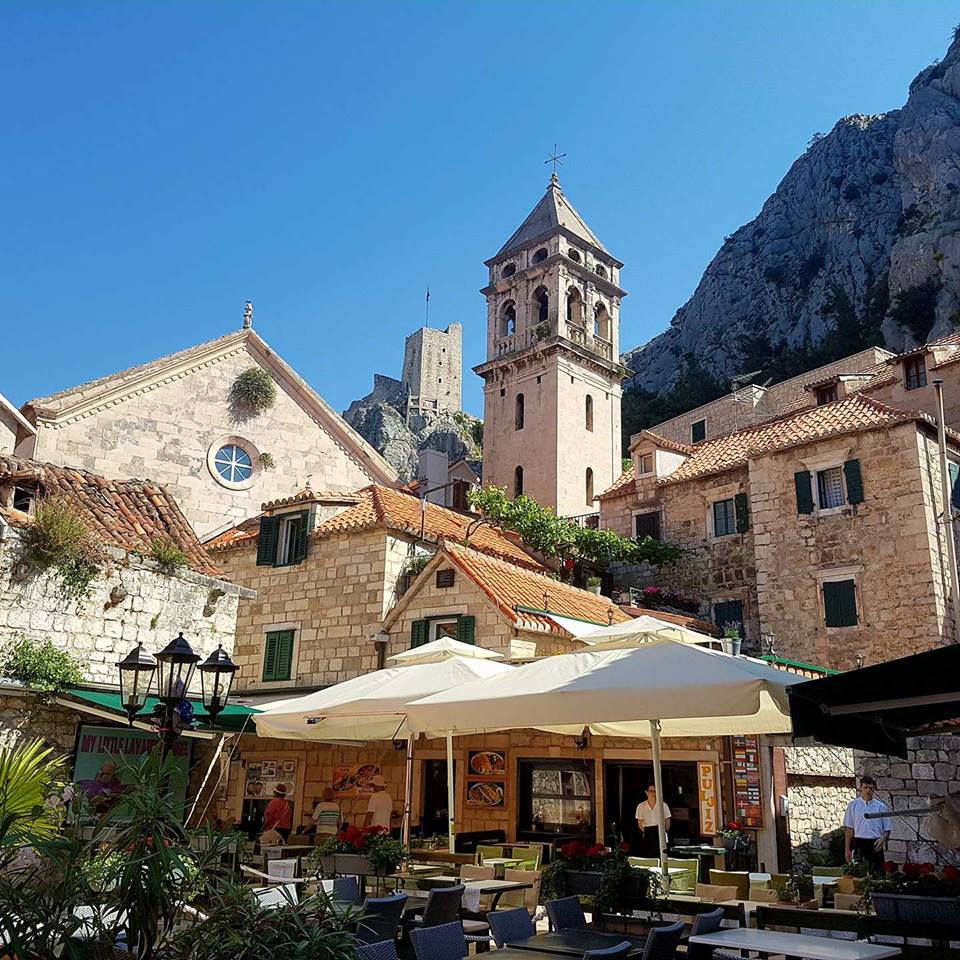
10. MEDIEVAL TOWN CENTRE In the Middle Ages Omiš was built on the left bank of the Cetina river, surrounded by the walls on the west, south and east and the Omiška Dinara hill on the north side. With time Omis was expanding and the walls were removed in the 19th century. The remains of the city walls can still be found in some places in town. Wandering around the narrow medieval streets and squares can take you to cute little discoveries such as so-called PILLAR OF SHAME on Poljica square, the town’s coat of arm on several locations and THE HOUSE OF THE HAPPY MEN. The House of the Happy Man is a Renaissance house that got its name by a Latin inscription above the entrance: GRATIAS AGO TIBI DNE QUIA FUI IN HOC MONDO, meaning: “I thank thee, Lord, for having lived in this world”. Omiš has more houses with interesting inscriptions like: BONO DE MERO BONO, meaning “Good is coming from pure goodness” or if I understood well, it could be also translated as “Good is coming from good wine!” It’s up to you which translation suits you better. It seems that medieval Omiš people were very happy and hospitable because there is another house with an interesting inscription: “Choia godir ovde dogde, veselo opet doma pogde”, meaning “Whoever comes here, goes home happy again.”
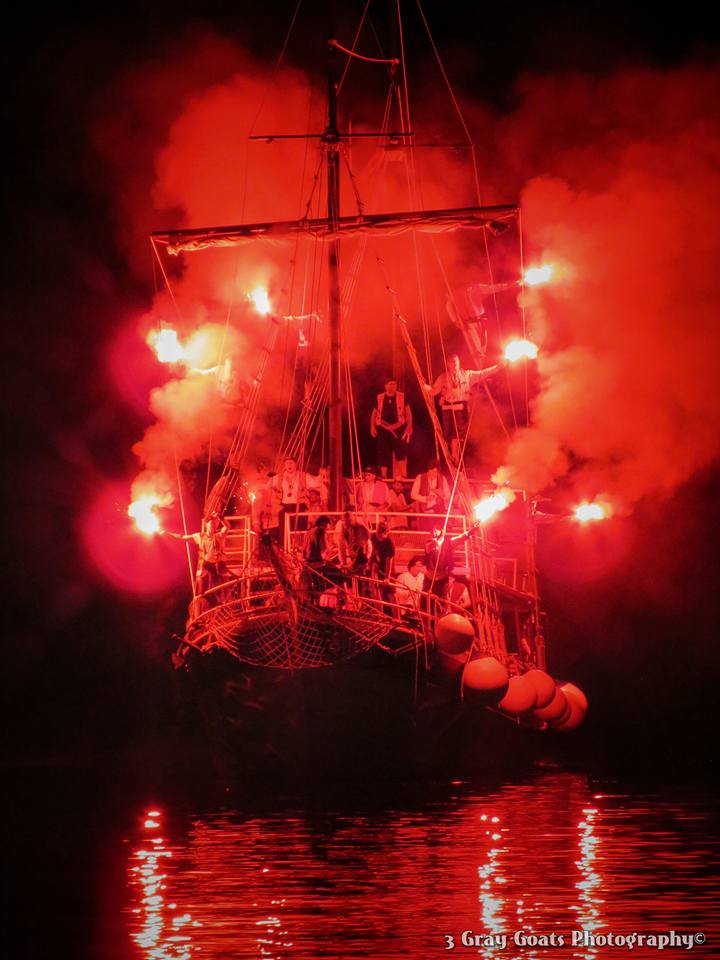
11. OMIŠ PIRATES What to say that hasn’t been already said about Omiš pirates? Some approve this part of Omiš history, some don’t. I like it! They were brave, cunning and bold, great sailors and shipbuilders who were taking right to their land and their sea, annoying powers ruling the Dalmatian coast at the time. People from Omiš, led by the Kačić dukes, controlled the Adriatic Sea all the way from Split to Dubrovnik during the 12th and 13th century, charging a fee for safe sailing. It was actually a very good business, for the part of the sea they controlled was the route for merchant ships and Crusaders sailing to the East (Constantinople, Palestine…). Merchant powers of those times like Venice, Dubrovnik, Kotor and Split, whose ships were sailing on this route didn’t like the idea of paying and I guess Omiš people weren’t being very polite and civilized as most in the Middle Ages. One thing led to another and the Omiš people became pirates! This is my very short interpretation on the subject.
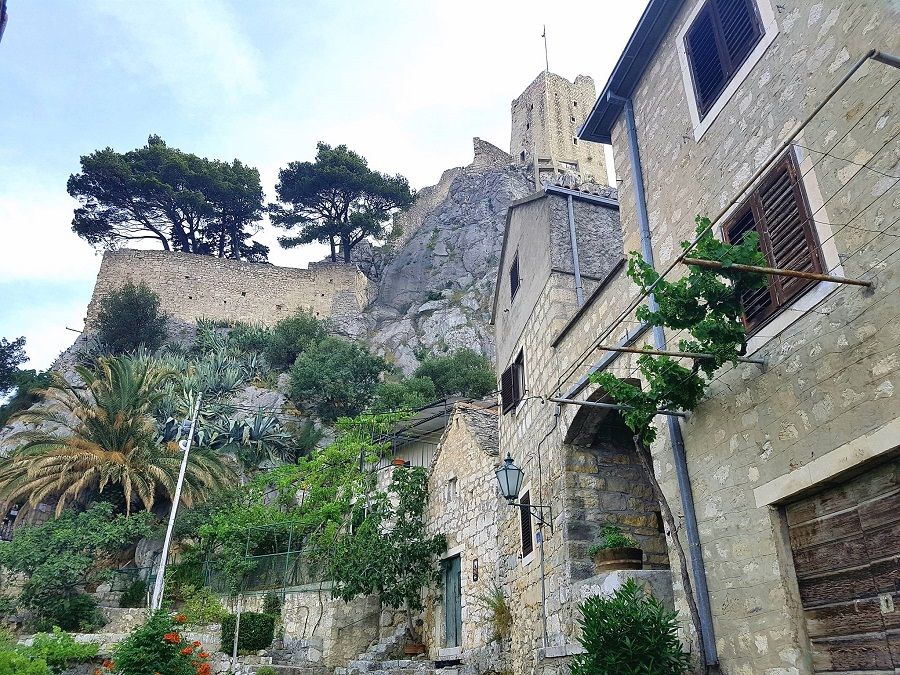
12. PIRATE FORTRESS – MIRABELA is also called Peovica. It is located above the town of Omiš. Mirabela is a Romanesque fortress, built on six cascading levels, it has three floors and the terrace on the top of the fortress. It was built in the beginning of the 13th century.
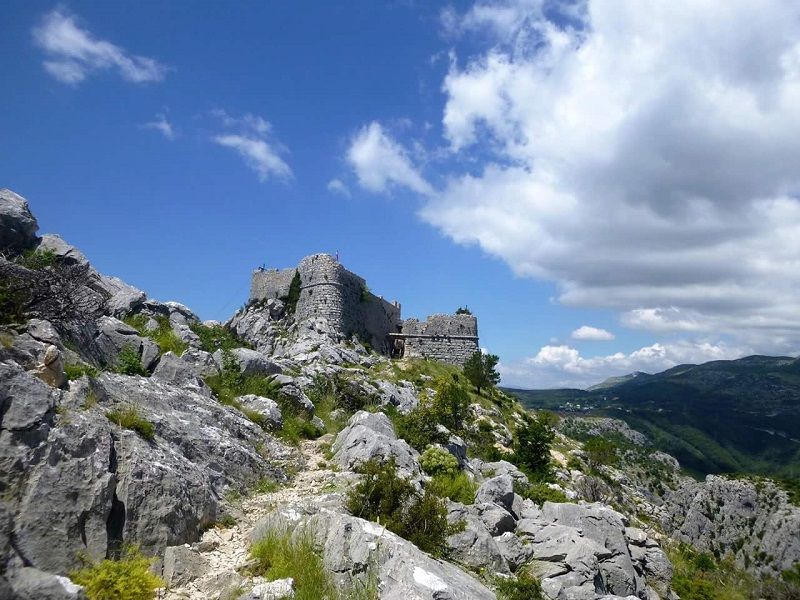
(Photo credit Adventure Omis)
13. FORTICA FORTRESS is also called Starigrad and has the most impressive location – the top of the Omiška Dinara. Thanks to the view over the islands of Brač, Hvar and Šolta, the Cetina canyon and part of Poljica, this spot was used as a lookout since the ancient times. The Fortica we can visit today is more than 500 years old and was primarily built for defense against the Turks.
The ruins of two more fortresses, VISUĆ and KUNJAK can be also found in the canyon of the Cetina river.
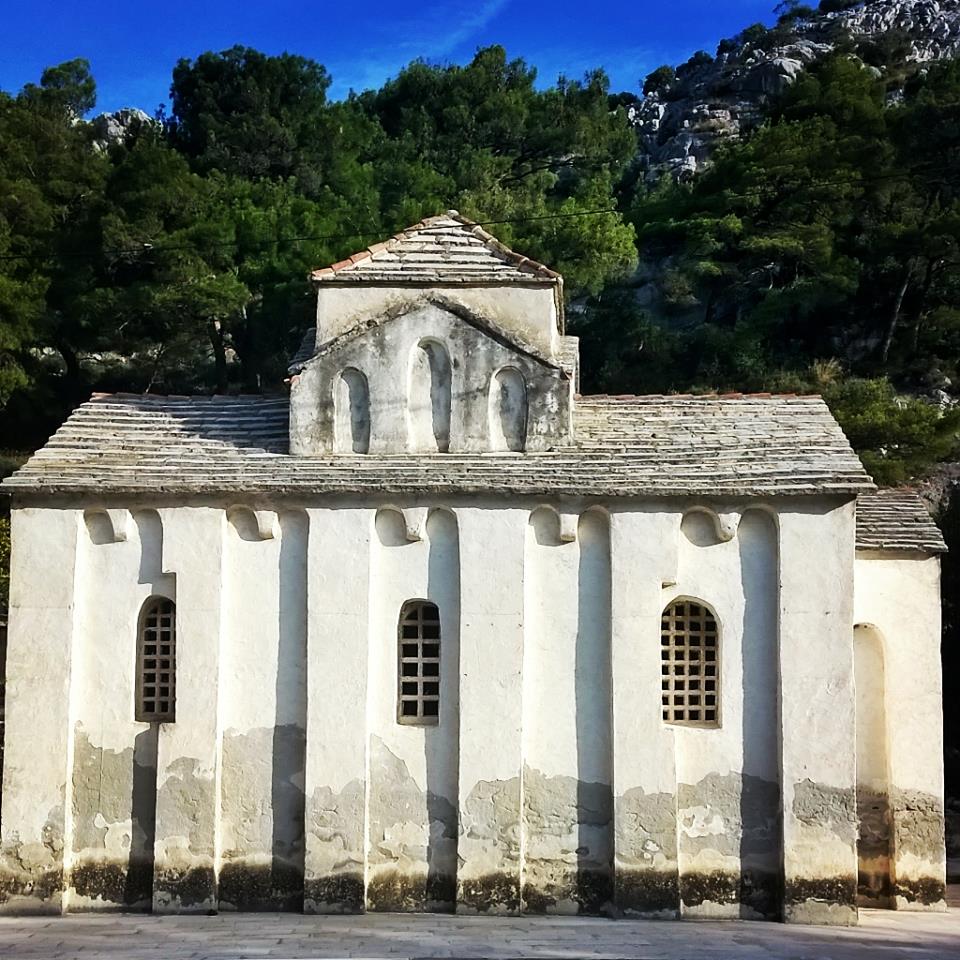
14. GORGEOUS TINY CHURCHES are spread all over the town and its surroundings. I’ll name a few of them. The Church of St Peter dates back to 10th century and is one of the most important examples of Early Croatian Pre-Romanesque sacral architecture. Two 16th-century churches of the Holy Spirit and St Roch are detached by old city clock and stone stairs. St Luke Church was built in 1618 and was used as mausoleum of Drašković family. The church of St Mary, also from the 17th century, was built on early Christian foundations and tombstones. Parish church of Omis is St Michael’s and was built in the early 17th century.
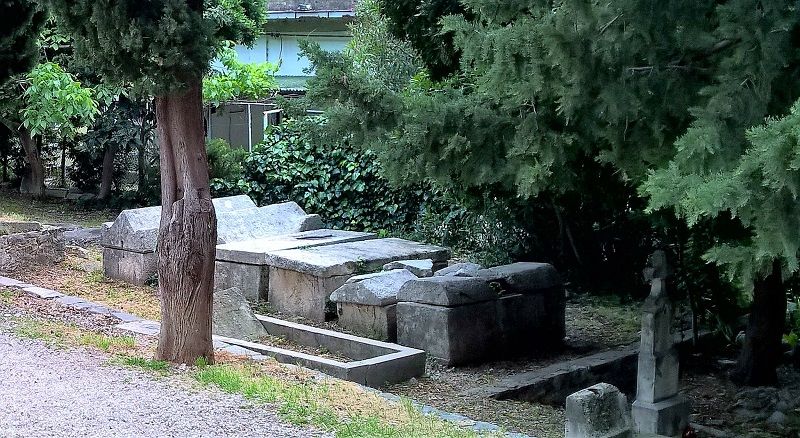
15. THE OLD GRAVEYARD used to be located outside the town walls. Today it silently witnesses past times with Roman sarcophagi, 16th-century old tombs of noble Omiš families and two small churches from 17th century St Mary’s and St Luke’s. Here was also found the headstone of one of the Kačić dukes, Miroslav (12 century). It’s a pity that this several hundred-year-old graveyard is neglected, but, on the other hand, its shabby look gives a romantic and nostalgic note to it.
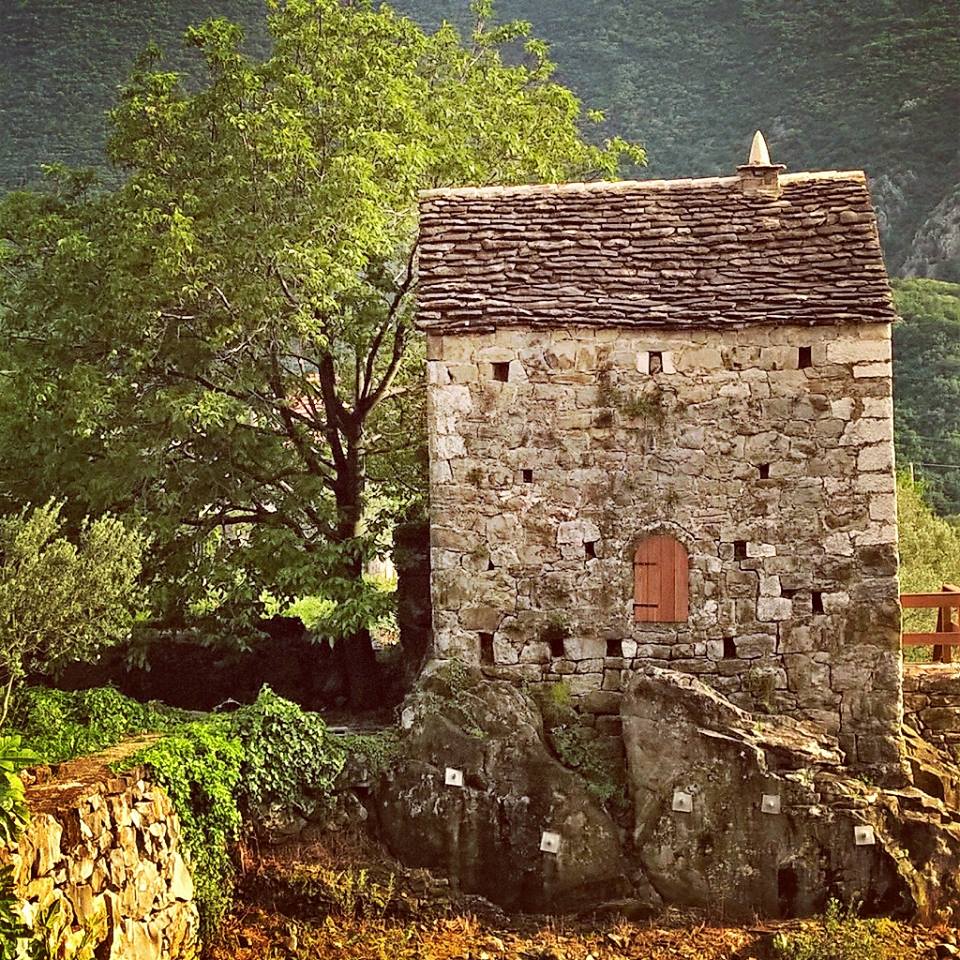
16. POLJICA is a historical region that covers most of the Inland Omis today, once known as the Principality of Poljica. The story of Poljica is so extensive that it asks for its own “25 things to know about” article. So, in short, the process of forming Poljica as an autonomous region began at the latest in the 13th century and lasted until the beginning of the 19th century. Poljica covers 250 km2 and consists of Upper, Middle and Lower Poljica. The statute of Poljica is one of the oldest and most significant Croatian legal documents. I have to admit, I love Poljica very much. It is hard not to love it due to its history, legends, tradition, stone houses and churches, karst and mountain landscape.
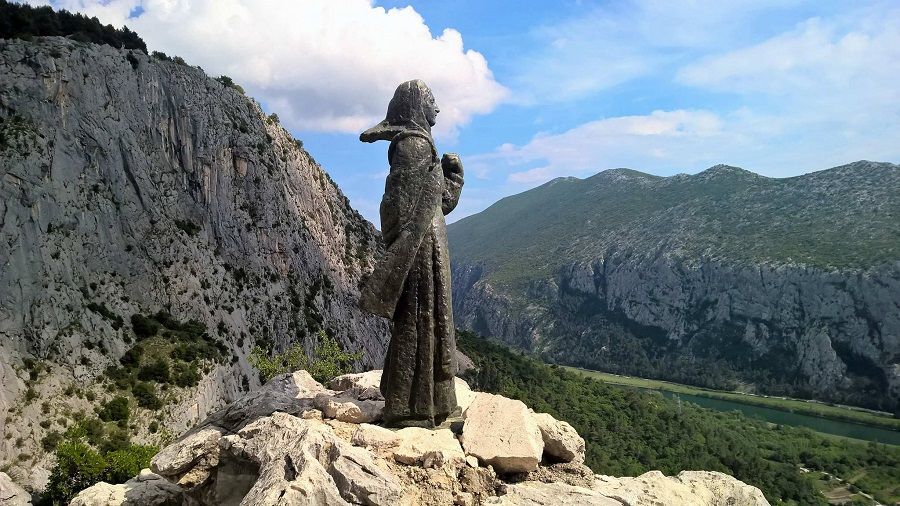
17. STATUE OF MILA GOJSALIĆ by famous Croatian sculptor Ivan Meštrović. Mila was the heroine of Poljica, who sacrificed her own life for the freedom of Poljica in 1530. Thanks to our world-famous sculptor Ivan Meštrović, Mila is standing on the cliff above the canyon, making sure her Poljica stays safe.
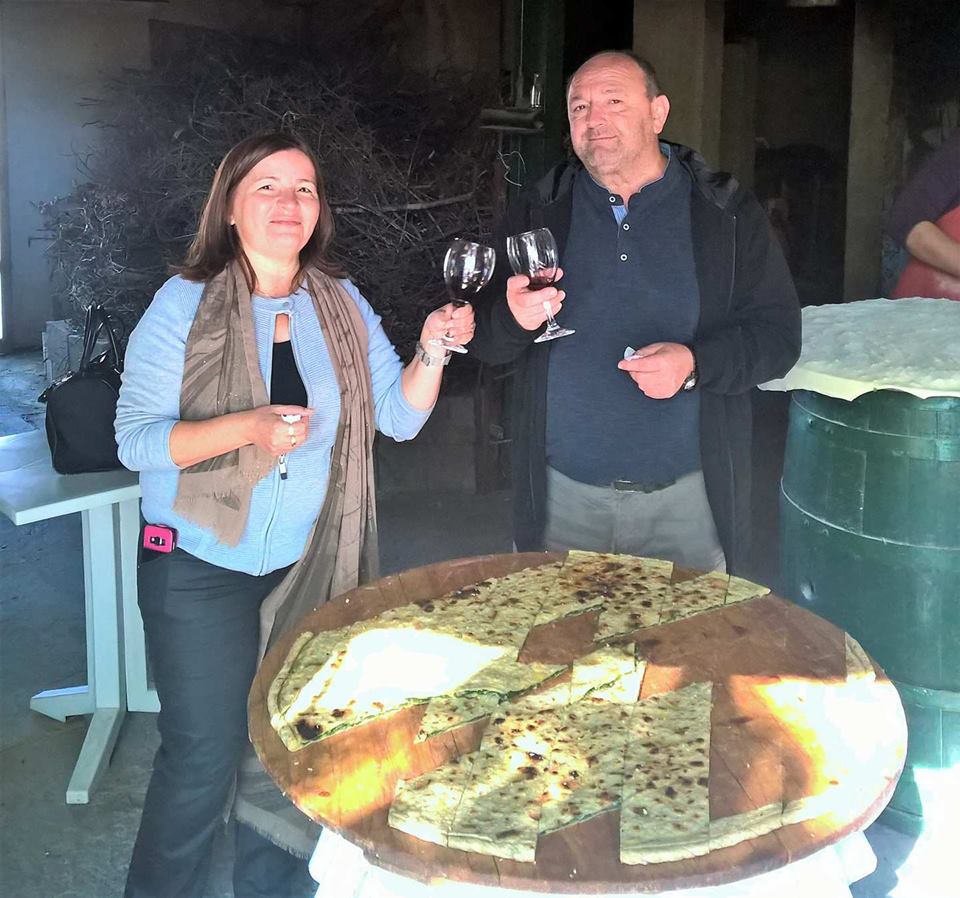
18. SOPARNIK is a yummy traditional dish from Poljica made of dough, swiss chard, onion, olive oil and garlic baked on Dalmatian open-hearth fireplace – komin, directly under hot embers and ashes and served on huge wooden board – sinija. Soparnik is protected and issued by the EU geographical origin label and declared as intangible cultural heritage of Croatia.
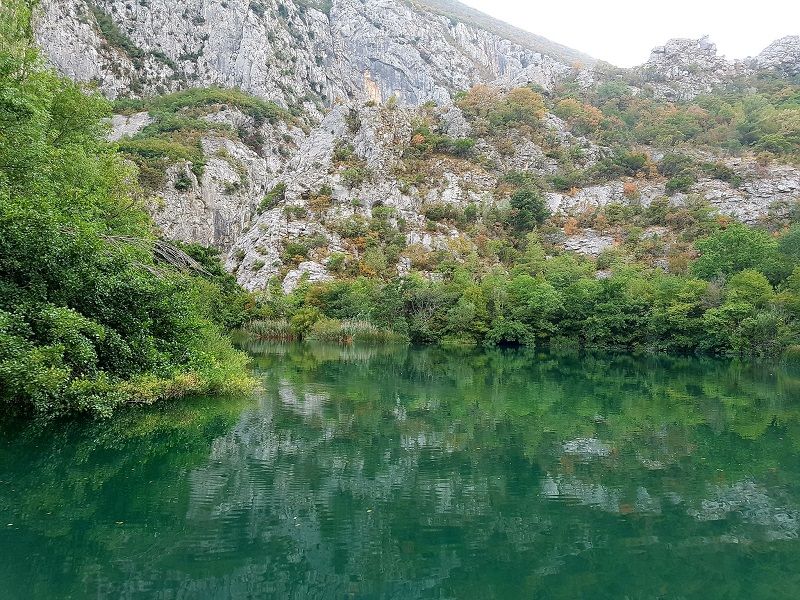
19. THE CETINA CANYON has the status of a protected significant landscape from the estuary and about 8 km upstream. It is geomorphological phenomena which typical karst river Cetina created on its way to the sea. The Cetina river is the largest Dalmatian river, 105 kilometers long. I also found it interesting that coralline red algae, considered as exclusively marine species, were found in the freshwater environment of the Cetina River in 2016. The karst Cetina River is enriched with dissolved calcium carbonate and a pH similar to the marine environment, suitable for colonization of the river by a marine species.
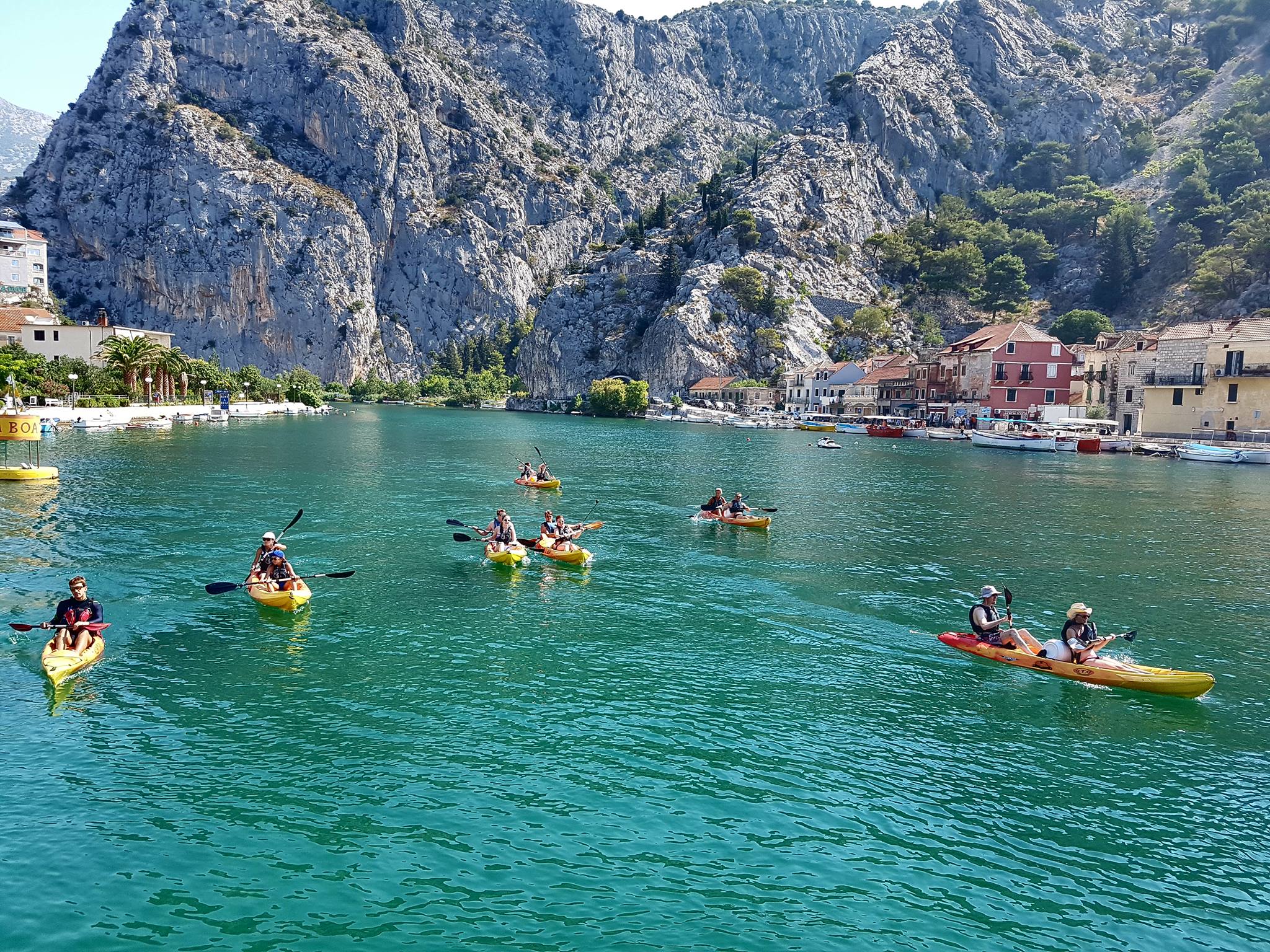
20. THE CAPITAL OF ACTIVE TOURISM! Just in case you don’t know what can pump your blood faster in Omiš, here goes the list of activities: Canyoning, ziplining, rafting, hiking, rock climbing, scuba diving, kayaking, stand-up paddling (SUP), cycling, windsurfing … Omiš Tourist Board put it nicely in a few words: Try it all or just relax!
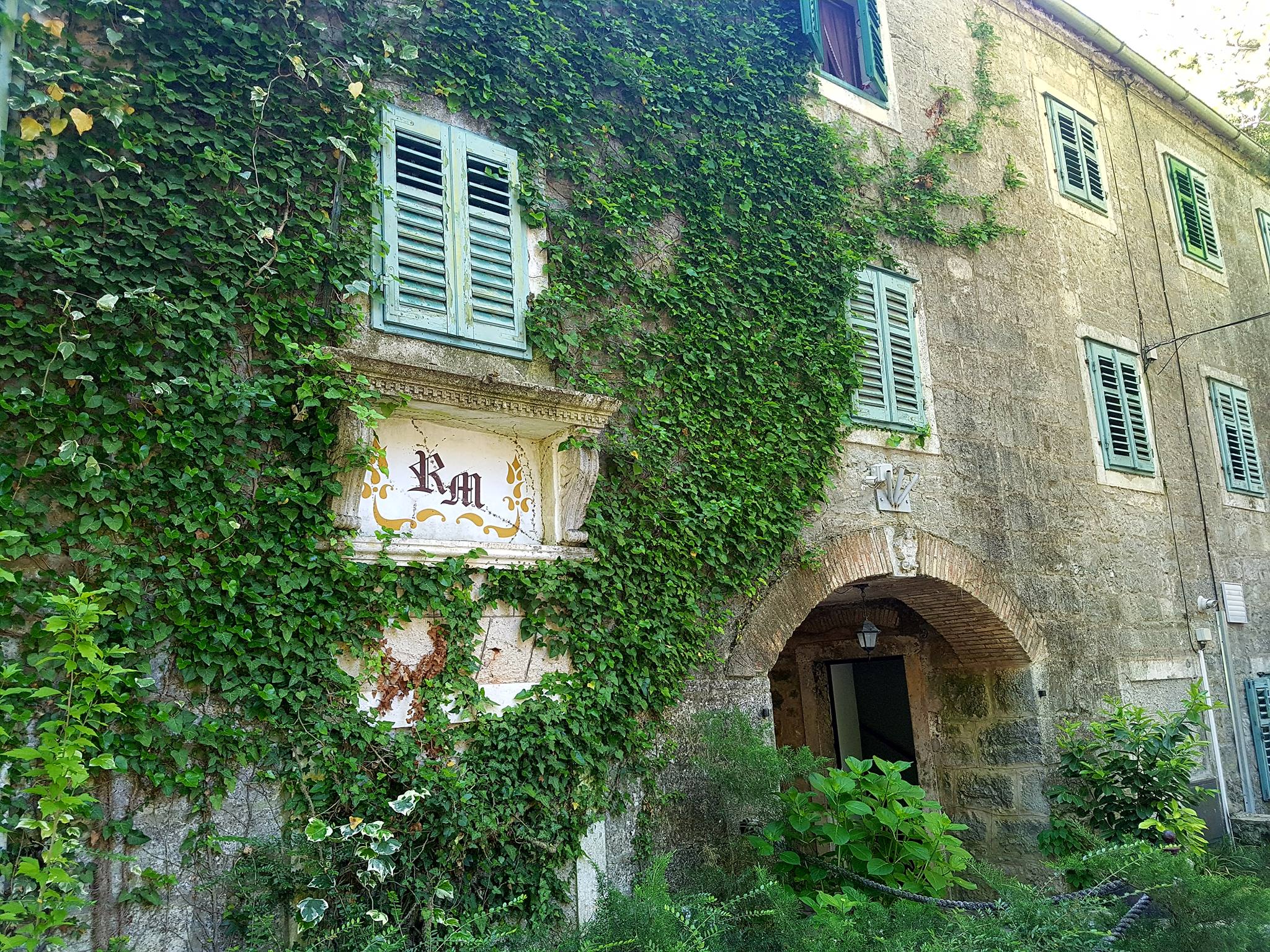
21. 19TH-CENTURY OLD EXCURSION SITE and even older. I write about Radman mills of course. Once a watermill and fancy stone cottage of the Radman family, today a restaurant and excursion site. The watermills don’t run anymore, but old millstones still can be seen as well as a fish pond, sundial, and 19th-century old Radman building. Next to the restaurant, there is also a park with a children’s playground and different sports facilities. If you do not fancy being too active in the canyon you can always go on nice, lazy boat tour to the mills. Do not forget to find a charming little river beach too! P.S. Shooting some of the legendary Winnetou movies based on the novels by the German author Karl May has taken place in the canyon and Radman mills.
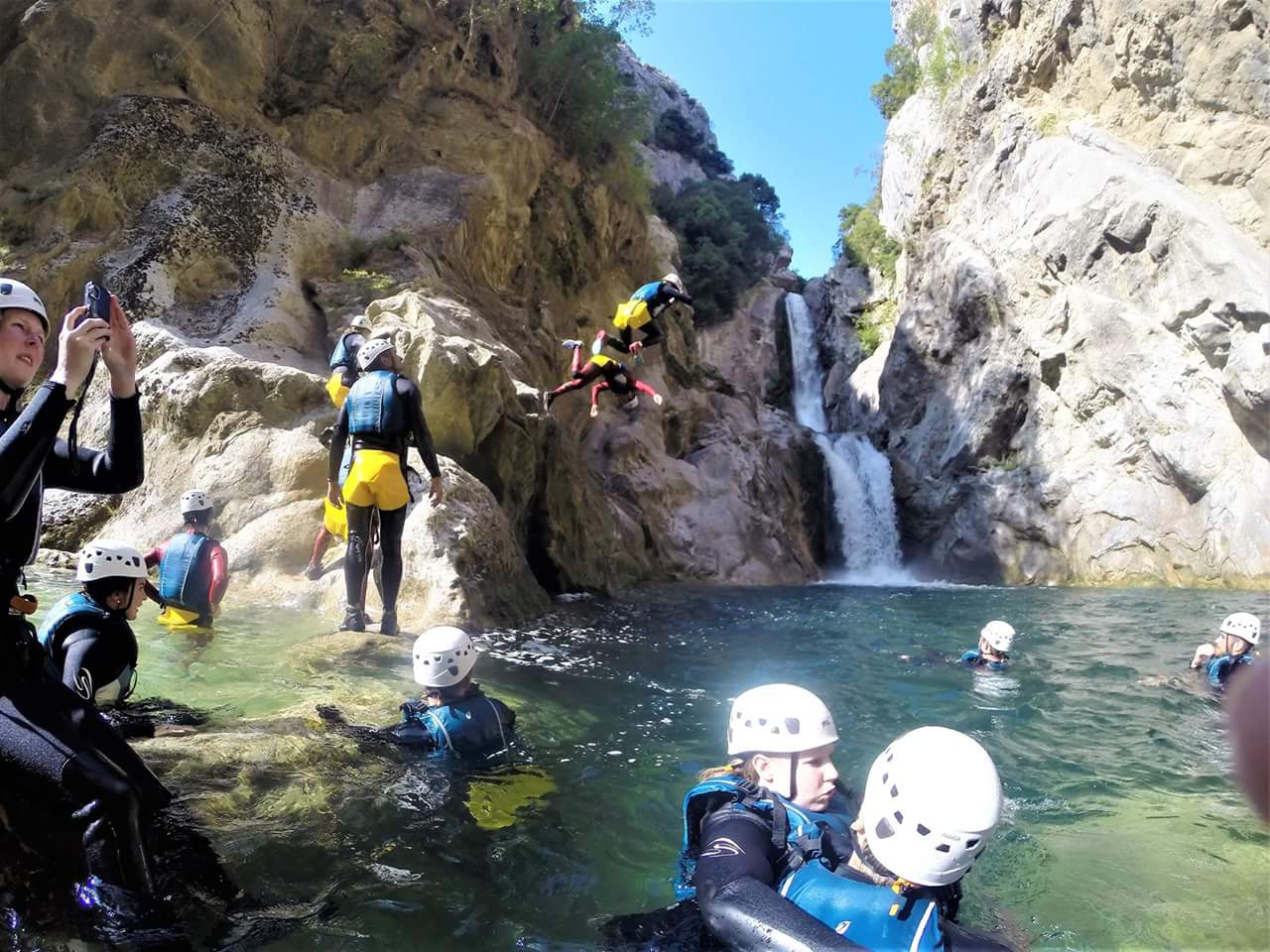
Credit: Adventure Omis
22. GREAT AND SMALL GUBAVICA WATERFALLS in the canyon of the Cetina river, some 30 km away from Omis, near the village of Zadvarje. The Velika (Great) Gubavica is 48 m and the Mala (Small) Gubavica is 7 m high. The Velika Gubavica is one of the biggest waterfalls in Croatia. The great news is that you can experience this beauty firsthand by going on a canyoning tour.
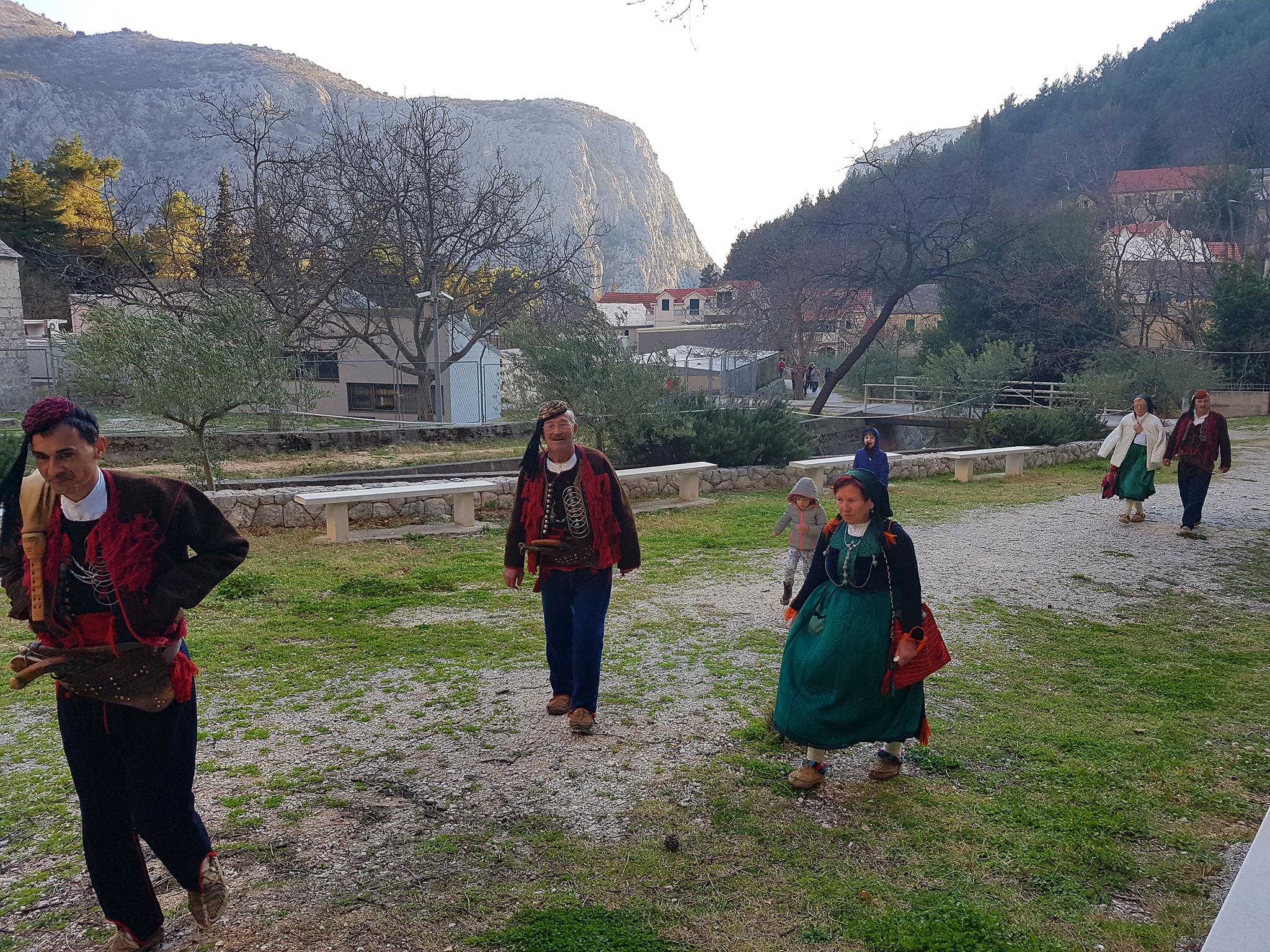
23. ST LEOPOLD MANDIĆ THEME TRAIL is the first theme trail open in the Omiš region. It starts next to the sanctuary of St. Leopold Mandic in Zakučac. It circles on the 2.6 km long part of the canyon and thanks to the 9 educational boards visitors can get to know more about the nature and culture of this area. There are also 11 rest stops and 5 magnificent viewpoints.
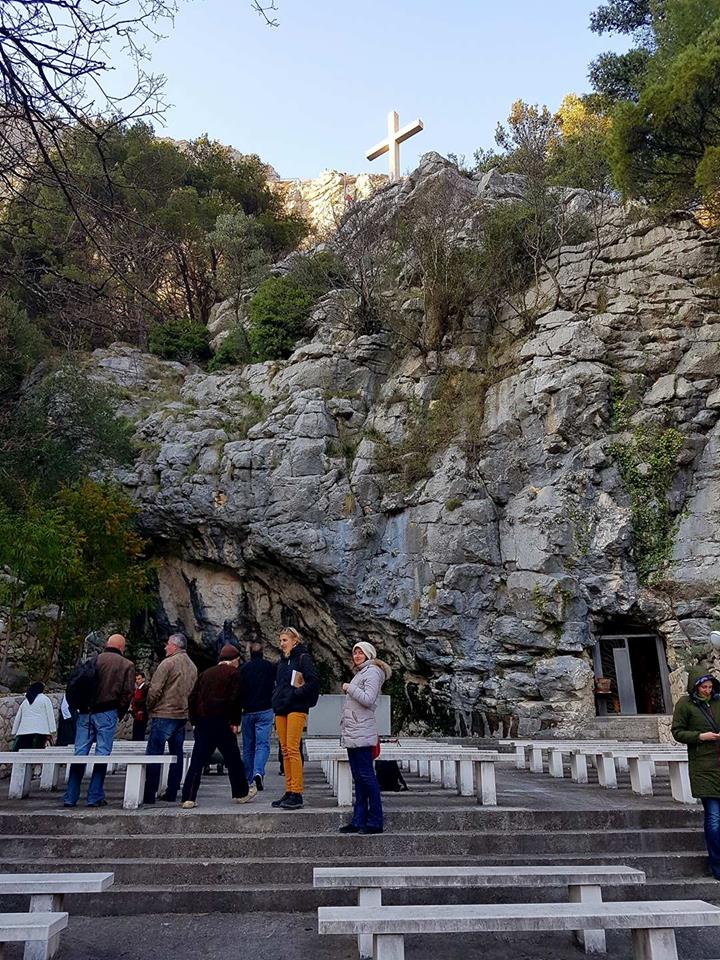
24. HYDROPOWER PLANT ZAKUČAC is situated in the canyon some 2 km from the estuary of the Cetina river into the sea. It is the biggest hydropower plant and energy facility generally in Croatia, built in the very Mosor mountain. There is another hydropower plant situated 21 km from Omiš, The Kraljevac hydropower plant. That one is the oldest hydropower plant, constructed in 1912.
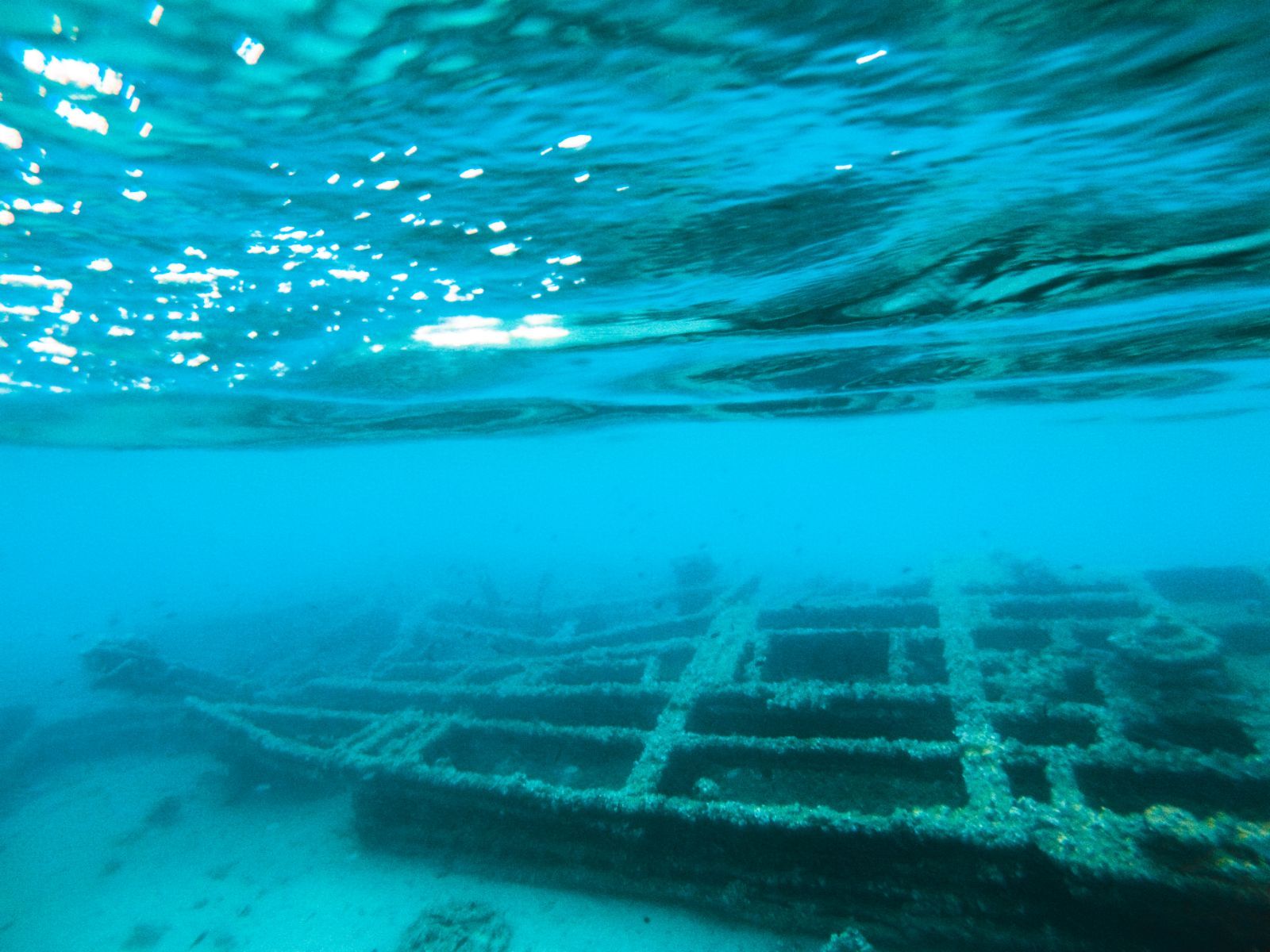
(Photo credit Malduk Vlahovic)
25. UNDERWATER SECRETS The old medieval underwater wall Mostina, made by Omis pirates, hides in the waters of the river and it is still visible today. The wall used to have a passage adjusted precisely to the size of the Omiš pirates’ small boats – sagittae, and was used as a trap for those who dared to follow them.
Near the main town beach, on 3 m depth is a sunken wreck of a World War II ship. I couldn’t find more information about this boat on the internet so I made some inquiries and one old man told me that English bomber hit the German warship in front of Pučišće on the island Brač. The boat was sinking slowly and at the time found its peace near the Omiš town beach.
I would love to finish this article by lyrics of local poet Josip Pupačić:
It is not because
I love the Cetina River;
but, such a town
I have never seen.
O my God, – the Cetina!
All other photos courtesy and copyright of Senka Vlahović. If you interested in visiting Omiš why not stop by the official page here.

